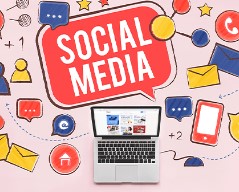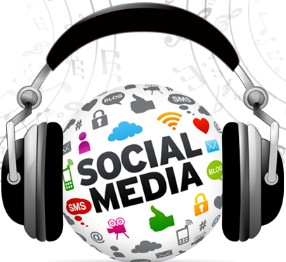Social media is not just a platform for sharing personal moments or staying updated with trends. It has evolved into a powerful tool for businesses and organizations to enhance collaboration, strengthen team dynamics, and streamline communication. Whether it’s for connecting remote teams, improving workplace culture, or fostering creativity, social media has become an essential part of the team-building process. This article delves into the significant ways social media contributes to team building, exploring its benefits, challenges, and practical applications in modern workplaces.
1. Building Stronger Communication Channels
Communication is the backbone of any successful team. In traditional work settings, face-to-face meetings and emails have been the primary means of communication. However, with the rise of social media platforms, especially those geared toward workplace collaboration, communication within teams has become more fluid and efficient. Tools like Slack, Microsoft Teams, and even Facebook Workplace allow for real-time communication, breaking down geographical barriers and ensuring that team members remain connected.
Social media fosters informal interactions, which are crucial for team building. While formal emails and meetings have their place, informal chats via social platforms often lead to more relaxed conversations, helping team members bond on a personal level. These interactions help build trust and camaraderie, essential ingredients for effective teamwork. When team members can communicate freely without the constraints of formal channels, they are more likely to share ideas, ask questions, and engage in meaningful discussions.
2. Facilitating Collaboration Across Distances
The rise of remote work, accelerated by the global pandemic, has made it more important than ever to establish effective collaboration tools. Social media has proven to be a game-changer in this regard. Platforms like Zoom, Google Meet, and Trello facilitate collaboration on shared projects, enabling teams to stay productive even when working from different corners of the world.
Beyond work-related platforms, social media networks also enable teams to remain connected by participating in shared online communities, interest groups, or even casual chats. These groups allow employees to engage in discussions outside their direct work responsibilities, which can lead to a greater sense of inclusion and belonging. It also provides a venue for informal brainstorming sessions, which can spark innovation.
3. Enhancing Team Engagement and Motivation
One of the challenges in remote or hybrid team settings is maintaining high levels of engagement and motivation. Social media tools can play an instrumental role in ensuring that employees feel involved and appreciated. Social media platforms often incorporate gamification elements such as badges, leaderboards, and challenges, which can be used to motivate teams and individuals. These elements help make team building more interactive and enjoyable.
For example, organizations can use social media to run team challenges or competitions where members are rewarded for achieving certain goals or milestones. These can range from collaborative problem-solving challenges to fitness goals. The rewards or recognition shared on these platforms serve as public acknowledgment of the team’s achievements, which can increase morale and motivation.
Moreover, regular updates, shout-outs, and celebrations of both team and individual achievements on social media keep employees engaged and connected. Recognizing achievements in real-time—whether it’s a shout-out on a team Slack channel or a post in a company-wide social media group—boosts employees’ morale and encourages a positive, motivating environment.
4. Promoting Transparency and Trust
A major benefit of social media in team building is the transparency it promotes. When team members are able to access information quickly, share feedback openly, and stay up-to-date on team progress, it creates an atmosphere of trust. Transparency ensures that all team members are on the same page, preventing misunderstandings and confusion.
For instance, social media tools like Trello or Asana allow teams to track project progress and communicate about tasks in real time. This visibility helps team members understand the bigger picture, fostering collaboration and aligning their efforts toward shared goals. When team members are aware of each other’s responsibilities and progress, trust and accountability naturally follow.
Additionally, social media platforms offer a space for open discussion, where team members can express their concerns, offer constructive feedback, and share their ideas. This open dialogue leads to a more inclusive and respectful work environment, where everyone feels heard and valued.
5. Building Team Culture and Identity
Social media has become an essential tool in shaping and nurturing team culture. When used effectively, social media platforms can help define the values, mission, and vision of a team or organization. Internal social media platforms, such as private Facebook groups or custom-built company social networks, provide an avenue for teams to interact beyond work tasks. These spaces allow for the sharing of team accomplishments, personal stories, photos, and behind-the-scenes moments, which help build a sense of belonging and unity.
A strong team culture, nurtured through social media, encourages collaboration, innovation, and loyalty. Employees who feel a sense of belonging are more likely to stay engaged and committed to the team’s goals. Social media also facilitates cultural exchange within teams, helping members from different backgrounds and locations to share their experiences, traditions, and ideas. This creates a more inclusive team environment where diversity is celebrated, contributing to stronger team cohesion.
6. Inspiring Creativity and Innovation
Social media provides a platform for employees to share their creative ideas and collaborate on innovative solutions. Tools like Pinterest, Instagram, and YouTube, although primarily used for personal purposes, can also inspire creativity within teams. By encouraging employees to share their personal projects or favorite ideas on these platforms, businesses can unlock fresh perspectives that may lead to innovative solutions.
Additionally, social media allows for real-time collaboration on creative projects. Teams can work together by sharing images, links, and media, brainstorming ideas, and offering constructive feedback, all within a digital space. Social media platforms allow for quick sharing and easy access to information, providing a fertile ground for creative ideas to flourish.
7. Fostering Employee Well-Being and Work-Life Balance
Social media platforms are not solely work-focused; they also provide a space for employees to connect on a personal level, share experiences, and support one another. Employees often use social media to talk about their hobbies, share their personal achievements, or simply connect with colleagues over mutual interests. By fostering a culture of wellness through social media, employers can help reduce stress and promote work-life balance.
Workplaces that prioritize employee well-being and mental health often utilize social media to organize wellness activities, from virtual yoga classes to mindfulness challenges. These initiatives contribute to overall job satisfaction and reduce burnout, making employees feel more valued and supported.
Furthermore, social media platforms often provide informal spaces where employees can ask questions and receive advice or mentorship from colleagues. This helps in building strong support networks, particularly for new employees or those who are working remotely. Having a platform where employees feel comfortable seeking help and offering support promotes a sense of community and camaraderie within teams.
8. Challenges and Considerations
Despite the numerous benefits of using social media for team building, there are also challenges to consider. Over-reliance on digital communication can lead to a reduction in face-to-face interactions, which may limit the development of deeper, personal relationships. Additionally, not all employees may be comfortable using social media platforms, particularly those who are not well-versed in technology or social media etiquette.
It is also essential for companies to establish clear guidelines for social media use, ensuring that it remains a productive tool and does not become a distraction. Without proper guidelines, social media can become a platform for gossip, misinformation, or unprofessional behavior. Setting boundaries, promoting positive interactions, and encouraging appropriate use of social media are vital for ensuring its role in team building remains beneficial.
Social media has revolutionized the way teams communicate, collaborate, and build relationships. By providing tools for instant communication, fostering creativity, and promoting transparency, social media platforms have become an essential component of effective team building. They facilitate connection, engagement, and innovation, making it easier for team members to work together, share ideas, and stay motivated.
However, like any tool, social media must be used thoughtfully and responsibly. By creating clear guidelines and fostering a culture of respect and inclusivity, organizations can harness the full potential of social media to enhance team dynamics and drive success. In an increasingly remote and digital world, social media will undoubtedly continue to play a vital role in shaping the future of team building.




